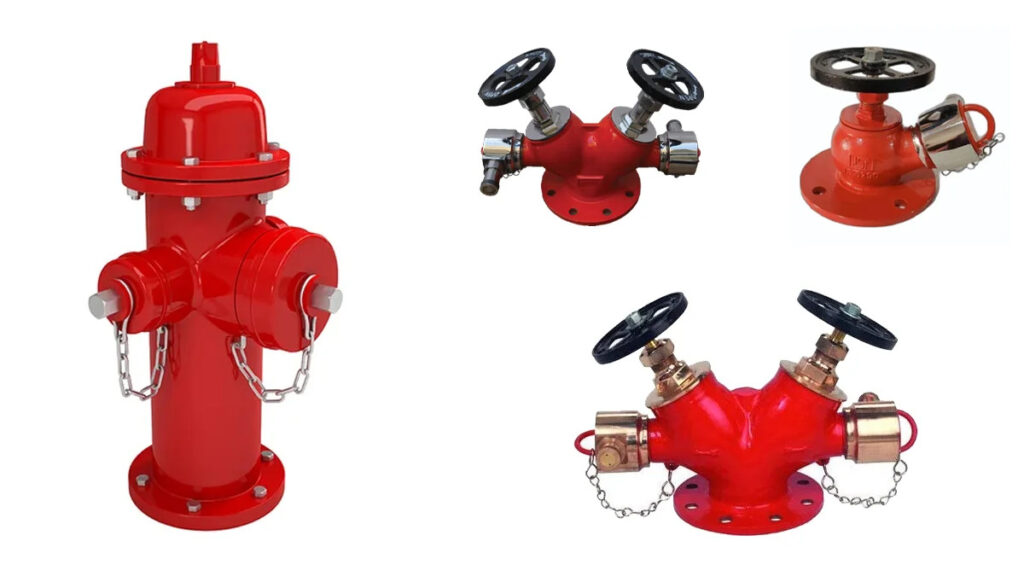
Fire hydrant systems are one of the most reliable and essential fire protection systems used in buildings, factories, warehouses, commercial spaces, and industrial plants. Designed to provide immediate and powerful water flow during a fire emergency, these systems help firefighters control and extinguish large fires efficiently. Understanding the different types of fire hydrant systems and their uses is important for architects, safety officers, facility managers, and building owners who want to ensure maximum fire protection and compliance with safety standards.
This guide explains everything you need to know about the various hydrant systems, their working, applications, and benefits.
What Is a Fire Hydrant System?
A fire hydrant system is a network of pipes, valves, hoses, and pumps designed to supply a continuous flow of water to fight fires. Unlike portable fire extinguishers that tackle small fires, hydrant systems are used for medium to large fires, especially in high-risk buildings. They provide firefighters with instant access to high-pressure water through hydrant points located at strategic locations across the property.
Fire hydrant system are widely used because they are effective, durable, and capable of operating even in the most challenging fire situations.
1. Wet Riser Hydrant System
A Wet Riser System is one of the most commonly used hydrant types in high-rise buildings. In this system, the vertical pipe (riser) is continuously charged with water under pressure. This ensures an immediate and steady flow of water whenever the landing valve or hydrant outlet is opened.
Uses of Wet Riser System
- Ideal for high-rise buildings above 15 meters
- Suitable for malls, hospitals, hotels, IT parks, and commercial complexes
- Ensures instant water availability for fire crews
- Reduces response time significantly during emergencies
Wet risers are preferred in buildings where maintaining constant water pressure is essential for effective fire control.
2. Dry Riser Hydrant System
A Dry Riser System remains empty and is only filled with water when needed. During a fire, firefighters connect the riser inlet (usually at the building entrance) to a fire engine, which pumps water upward through the pipes.
Uses of Dry Riser System
- Suitable for buildings between 10m and 50m tall
- Commonly installed in old buildings with limited water storage
- Ideal when water pressure cannot be maintained constantly
- Dependable in areas where freezing temperatures may cause wet riser pipes to burst
Dry risers are cost-effective and useful in climates or structures where maintaining wet pipes is impractical.
3. External Fire Hydrant System (Outdoor Hydrants)
External or outdoor hydrant systems are commonly seen near roads, building entrances, industrial estates, and large open areas. These systems include ground hydrants (underground) and pillar hydrants (above ground) that supply large volumes of water directly to fire trucks.
Uses of External Hydrant System
- Essential for industries, warehouses, chemical plants, fuel stations, and logistics hubs
- Helps fire brigades access water without entering the building
- Useful for fighting exterior or large-scale fires
- Supports quick firefighting operations during emergencies
Outdoor hydrants are a primary requirement for factories and high-risk industrial zones.
4. Yard Hydrant System
Yard hydrants are hydrant points installed around the perimeter of a building or campus. These hydrants are connected to the main hydrant network and provide easy access to water from outside the structure.
Uses of Yard Hydrants
- Perfect for large campuses, universities, industrial parks, and manufacturing units
- Allows firefighters to control fires from multiple angles
- Ensures water availability at outer boundaries
- Supports both internal and external firefighting operations
Yard hydrants improve coverage and accessibility in open and semi-open areas.
5. Single-Hydrant System
A single-hydrant system has one hydrant outlet at each hydrant point. This system is suitable for buildings with lower fire risk and limited water demand.
Uses of Single-Hydrant System
- Ideal for small commercial buildings, offices, showrooms, and residential complexes
- Simple, low-maintenance, and cost-effective
- Provides sufficient water flow for smaller fire hazards
Single hydrants are best used where minimal but reliable protection is required.
6. Double-Hydrant System
A double-hydrant system has two hydrant outlets at one hydrant point. These outlets may be used simultaneously, depending on water pressure.
Uses of Double-Hydrant System
- Ideal for large buildings, malls, warehouses, and factories
- Supports multiple firefighters battling fire from different hoses
- Provides high water discharge and better coverage
- Suitable for areas with high fire load
Double hydrants are essential for buildings where high water flow is necessary to control extensive fires.
7. Pumping System in Hydrant Networks
A fire hydrant system depends heavily on its pumping system. The fire pump ensures constant water pressure in the hydrant network.
The main types of pumps used include Electric Fire Pump, Diesel Fire Pump and Jockey Pump.
Uses of Fire Pumps
- Maintain required pressure across hydrant points
- Ensure uninterrupted water supply during emergencies
- Support multiple hydrants operating at the same time
- Provide backup power through diesel pumps
Without pumps, hydrant systems cannot function effectively, especially in multi-storey or large buildings.
Choosing the Right Fire Hydrant System
Selecting the correct hydrant system depends on factors like:
- Building height
- Occupancy type
- Water availability
- Fire load
- Local fire department regulations
- NBC and IS standards
A professional fire safety audit can help determine the best system based on building risk and compliance requirements.
Conclusion
Understanding the different types of fire hydrant systems and their uses is essential for designing a safe, compliant, and effective fire protection strategy. Whether it’s a wet riser for high-rise buildings, a dry riser for older structures, or outdoor hydrants for industrial zones, each system plays a crucial role in controlling fire emergencies. Installing the right hydrant system ensures quicker response, better safety, and legal compliance—making it a vital investment for every building.


